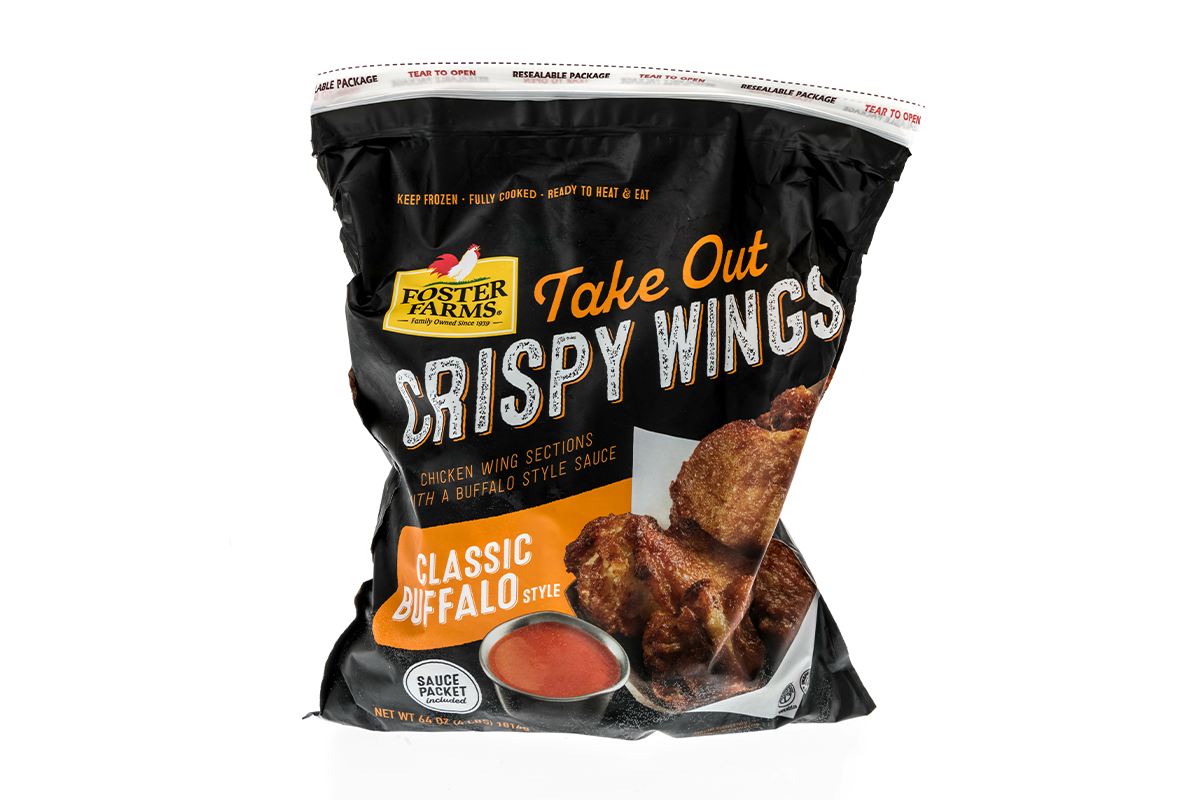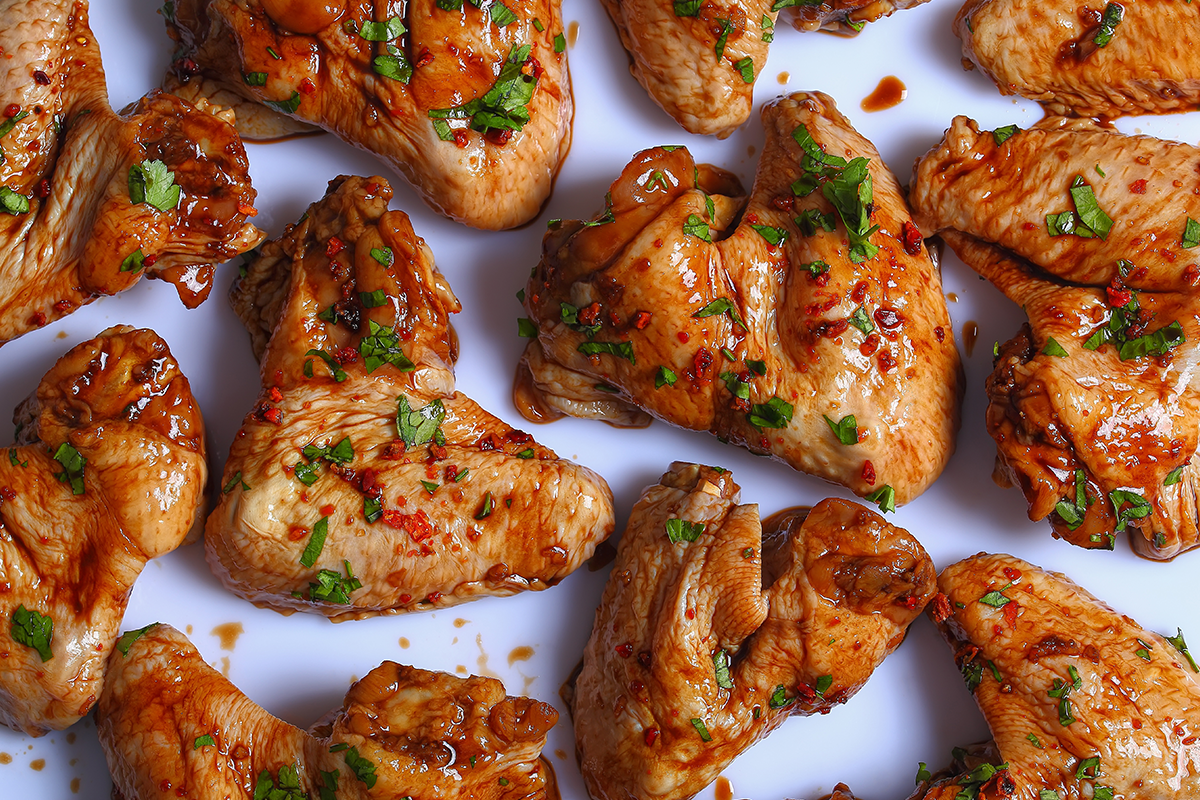Chicken, the most widely consumed meat in the United States, may be purchased ready to eat in the form of a rotisserie bird from the deli department, a spicy chicken sandwich from a fast-food chain or wings from the neighborhood bar and grill. With any of these formats, the cook typically goes to great lengths to ensure the meat is succulent without being too greasy. Home cooks attempting to recreate these products are often challenged by their lack of cooking skills and patience for a slow and low-temperature preparation. Poultry processors may assist by including ingredients designed to prevent chicken from drying out.
“One of the largest hurdles poultry processors face is ensuring the quality attributes of their products can withstand abusive cooking techniques within foodservice settings or at home,” said Courtney Schwartz, marketing director, Kemin Food Technologies, Des Moines, Iowa. “Moisture retention and yield enhancement of proteins are essential to offering high-quality products, leading to the brand’s success.”
Having it all
Consumers want it all with chicken. They appreciate the whole muscle — sans the skin — being low in fat and rich in protein. But it’s a double-edged sword, because it’s precisely this composition that causes chicken to dry out when cooked. Without ingredient assistance to bind inherent water, it cooks out during preparation. There’s also not enough fat between muscles and within muscles in chicken to compensate for the moisture purge. The leaner the muscle, the more water it contains and the greater the chance of it drying out.
“A wide variety of ingredients may be used to improve water-holding capacity, including the use of different phosphate ingredients, along with starches and fibers from different food sources,” said Garrett McCoy, senior manager of research, development and applications, Corbion, Lenexa, Kan. “Ingredients such as sodium or potassium lactate, cultured sugar or cultured dextrose also may be used to improve water-holding capacity. These ingredients provide unique dual functionality, not only to extend shelf life of meat products but also to improve water-holding capacity.”
These functional ingredients are usually dissolved in a water solution that gets injected into the muscle or applied through a tumbling system. This brings more moisture into the meat.
“Meat processors use brines and marinade systems to help tenderize the meat and control moisture in the protein,” said Matt Petti, technical service manager, Sensient Flavors and Extracts, Hoffman Estates, Ill. “These systems are vital in helping reduce moisture loss (purge) during the freeze-thaw cycle, increasing yields during the cooking process and providing flavorful, juicy chicken.”
The inclusion of such systems requires declaration on the front of the package. The labeling term “marinated” can only be used with specific amounts of solution. Boneless poultry may contain no more than 8% solution, while bone-in poultry, no more than 3% solution, according to the US Department of Agriculture’s Food Safety and Inspection Service. The solutions are required to be identified as part of the product name regardless if the solution is incorporated into the product or is free flowing.
More “solution” may be added. It simply cannot be labeled as a marinade. In this case, the percentage of added solution (total weight of the solution ingredients divided by the weight of the raw meat without solution or any other added ingredients multiplied by 100) must appear as a number (such as, 15, 20, 30, etc.) with the percent symbol. The percentage of added solution may be declared by the words “containing” or “contains,” such as, “contains 15% added solution of water and salt.”
“Without added moisture, some chicken costs may begin to be prohibitive and organoleptic characteristics, such as juiciness and flavor, can be adversely affected,” said Joe Purl, food scientist and culinary chef, Cargill, Minneapolis.
Frozen poultry tends to contain higher amounts of added water than fresh product. Pieces may include a water glaze, which forms a barrier between the meat and the environment to prevent freezer burn.
“Consumers may opt for non-enhanced/marinated chicken because they believe they are ‘paying for water,’” said Michael Cropp, technical services manager, Kemin Food Technologies, Des Moines, Iowa.
And they are. A bag of frozen uncooked wings, for example, may be labeled as containing “15% added moisture,” some injected and the rest in the form of a water glaze. The consumer may not understand that the 4-lb bag is really only 3.4 lbs of chicken wings. Also, they may be surprised that all that water will “stew” the wings in the oven versus bake them up crispy unless they are properly defrosted and patted dry. The internal moisture must be bound to keep the wings succulent. That’s where functional ingredients come into play.
 Frozen wings will cook up crispier if they are thawed and patted dry before baking. (Source: ©HOMANK76 - STOCK.ADOBE.COM)
Frozen wings will cook up crispier if they are thawed and patted dry before baking. (Source: ©HOMANK76 - STOCK.ADOBE.COM)Pumping up the bird
Moisture-enhancement solutions consist of water and other ingredients, namely salt and phosphates. Sometimes antioxidants are added to extend freshness. Herbs, spices and flavors may be included to add some zest.
When salt is added to meat, it dissolves and releases positively charged ions, which then interact with negatively charged ions in the meat. This interaction causes the meat proteins to swell and dissolve, increasing the meat’s water-binding capacity.
“Potassium chloride, which can appear on ingredient statements as potassium salt, is a primary go-to solution for sodium chloride replacement,” Purl said.
Phosphates are also an effective way to bind moisture. They raise the pH of the meat, which causes the protein fibers to unfold and open up the protein structure. Once the protein structure is open, phosphates and water bind with protein molecules.
“In addition to brining meat, processors will often batter or bread meat to create a barrier from the [cooking] heat and thus maximize internal moisture retention,” said Amr Shaheed, technical service manager of food applications, Innophos, Cranbury, NJ. “Phosphates can be added to the batter or external breading to retain the moisture inside and still allow for a crispy exterior.”
“Selecting a brine solution and a breading mix that includes phosphates is critical when developing chicken that will be deep fried,” Shaheed said. “Phosphates help bind water better than sodium salts or other ingredients. As a result, phosphates ensure that moisture is retained in the meat rather than being released into the deep fryer.”
Phosphates are not a one-size-fits-all answer. There are many options, including potassium phosphate instead of sodium phosphate when sodium contents need to be kept low.
“The breadth and variety of specialty phosphates make it an important moisture enhancement technology since specific types of meat — cooked, refrigerated or frozen — and different cuts of meat can be optimized with different phosphates,” Shaheed said. “Each phosphate imparts different properties to the muscle, so it is imperative to select the right phosphate to achieve the desired texture and quality of the finished product.”
Functional solutions
Kemin offers patented functional proteins that provide processors with a complement or alternative to phosphates. The ingredient for chicken is made from chicken without the use of artificial ingredients. It may be used to improve sensory attributes without increasing production cost. By incorporating it into the meat block formulation, raw material input costs may be lowered while simultaneously allowing more natural retention of yield and a juicier bite for consumers.
“They are patented, label-friendly functional protein ingredients that may serve as alternatives to using high levels of salt or chemical additives,” Schwartz said.
Cropp said, “The patented technology utilizes a pH shift process that allows native myofibrillar proteins to hold more water and result in improved moisture retention even during prolonged heating exposure.”
Kemin conducted numerous trials to evaluate the impact of the functional protein ingredient on poultry yield, as compared to untreated and phosphate controls. In a trial on cooked chicken sheet meat prepared using a typical commercial process of maceration, vacuum tumbling and impingement cooking, the functional protein improved yield while reducing the starting meat block by 10%. When used in combination with phosphate, the effect included further improved yield over product treated with phosphate alone.
There’s a version of the functional protein designed for industrial battered, breaded and fried foods. The functional protein system forms a micro barrier around items to inhibit frying oil from being absorbed into the breading. Depending on the coating system, fat uptake may be reduced by up to 50%. Less moisture is also lost in the product during frying, which may result in increased yield.
“Consumers love breaded and fried foods, but only when they are crispy on the outside, tender on the inside and have a satisfying, less greasy mouthfeel,” Schwartz said. “This ingredient provides poultry processors the opportunity to meet the label claims and product attributes consumers desire, while achieving greater yields. It has excellent flavor with no competing flavors.”
Cropp added, “Less oil is absorbed, which results in increased moisture retention from not allowing the oil in and the water out. It also improves oil life, as less breading falls off and there’s less free fatty acids in the oil. This leads to cost savings.”
When preparing a brine or marinade, order of addition of ingredients matters. Proper hydration and dissolving of ingredients make a big difference in functionality. Proper hydration leverages the functional properties of the ingredients to offer the best outcome in the enhanced chicken product.
“There is a delicate balance between just enough and too much moisture so the breading doesn’t get affected during the cooking process,” Purl said. “There’s also a lot of research and development work that goes into the breading as well to be able to properly manage the cooking temperatures and moisture transfer from the meat to the breading.”
When sodium content must be managed, there are potassium-based functional ingredients that may be used to replace sodium salts. This includes potassium chloride, potassium phosphate and lactates.
“Sodium-free ingredients, such as potassium lactate, may be used to create a shift in the isoelectric point of meat, similar to sodium phosphate,” McCoy said. “This shift in the isoelectric point allows for swelling of the muscle fibers, resulting in increased water-holding capacity.”



